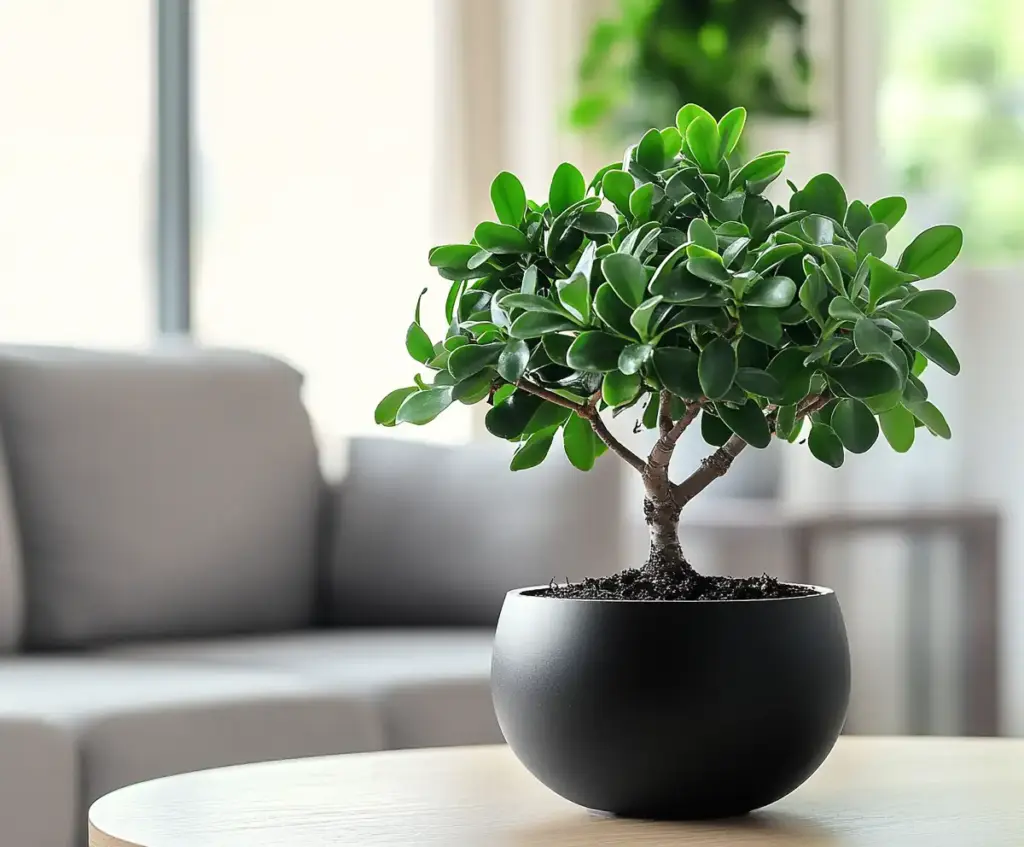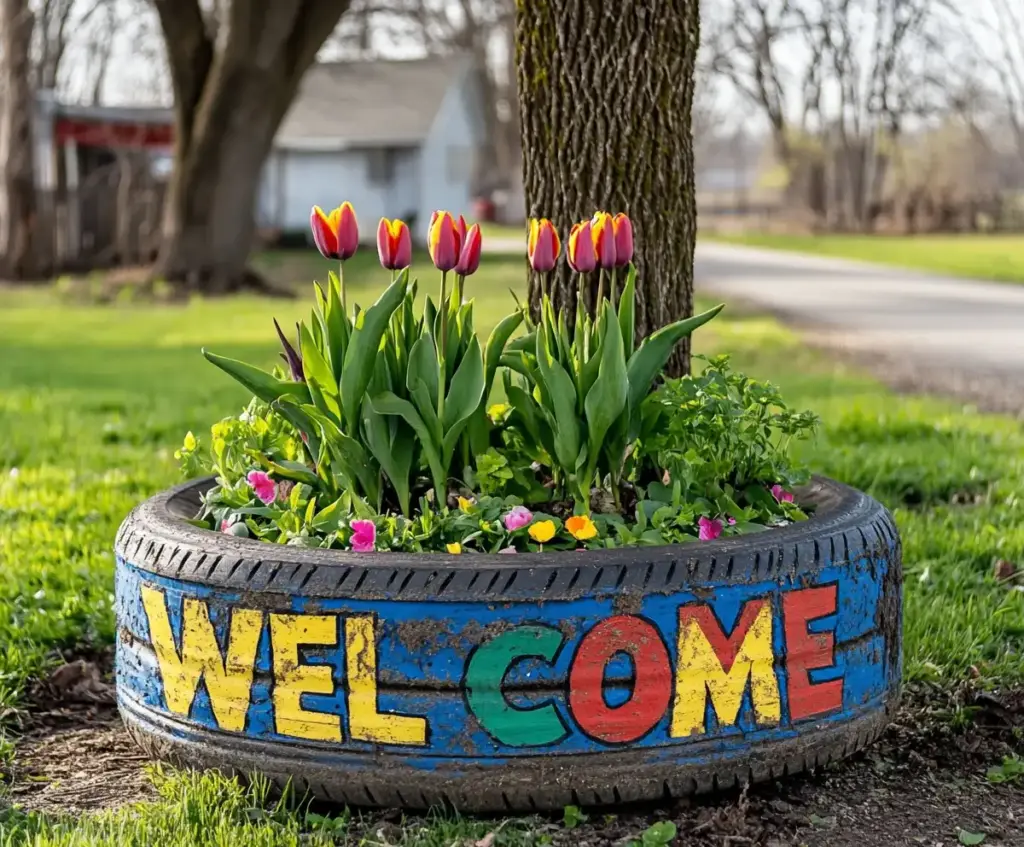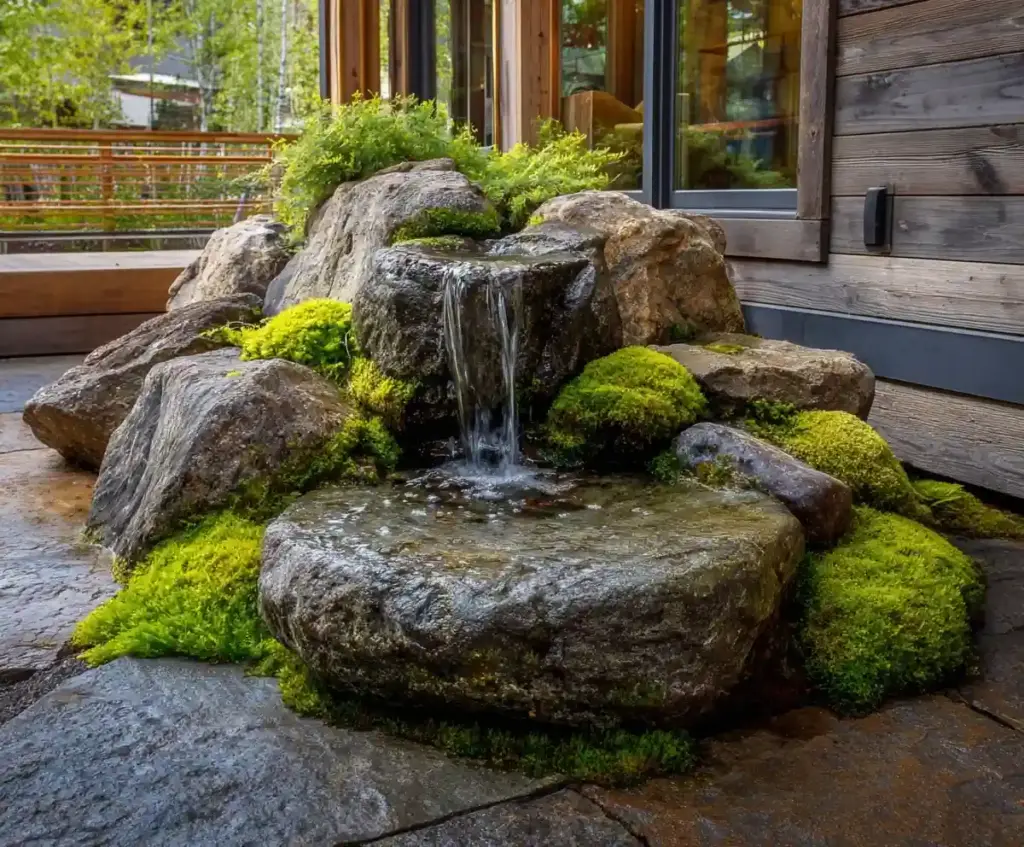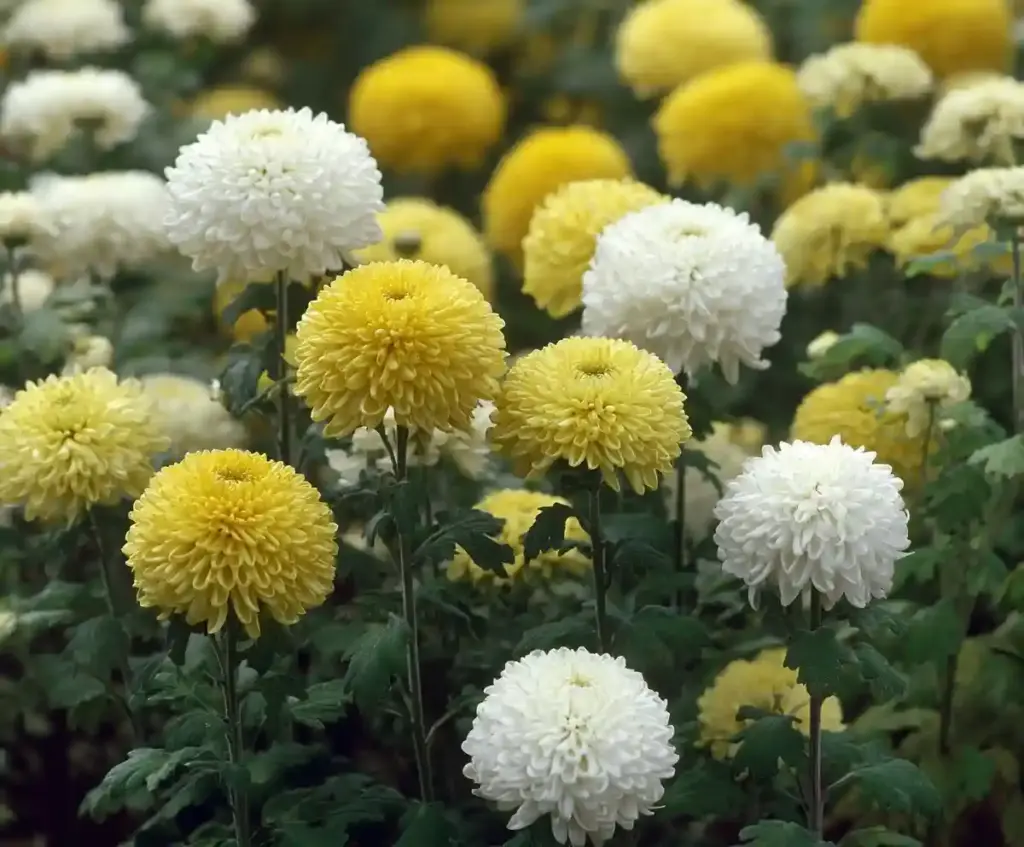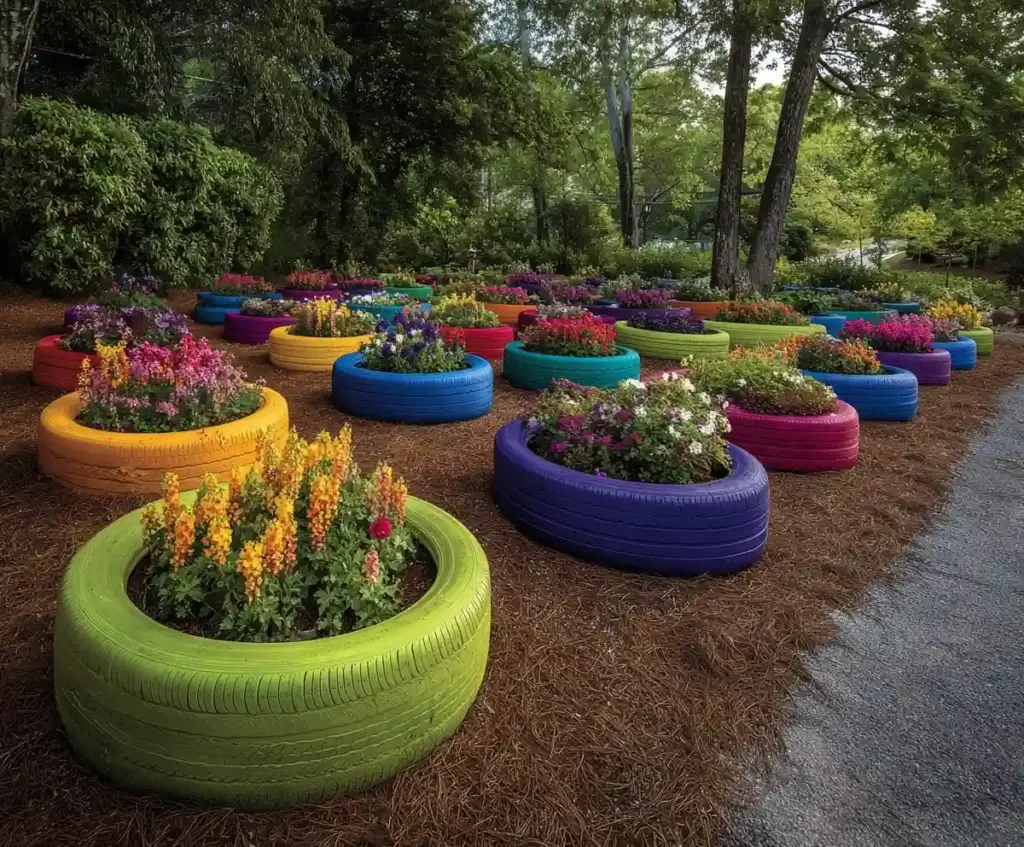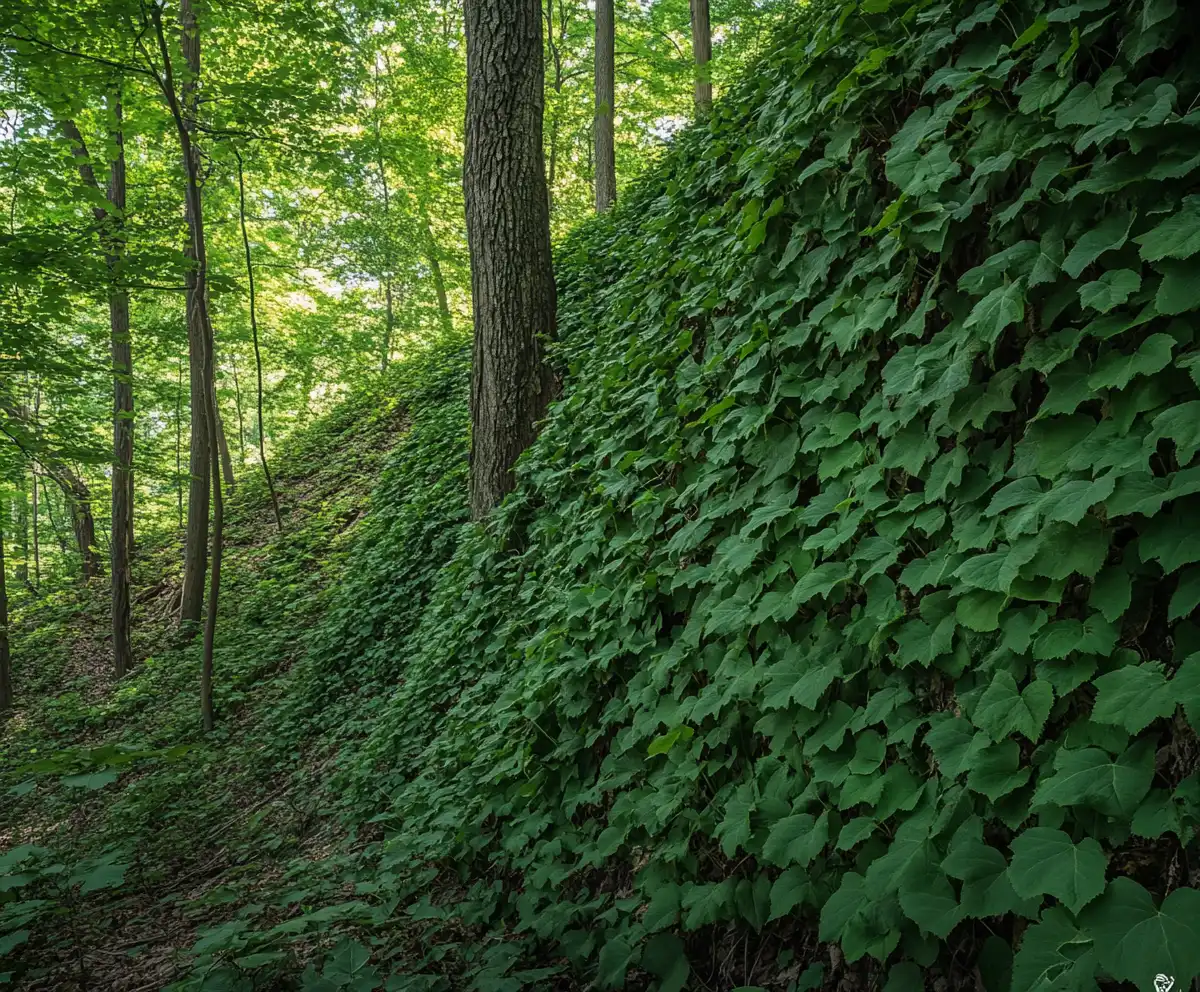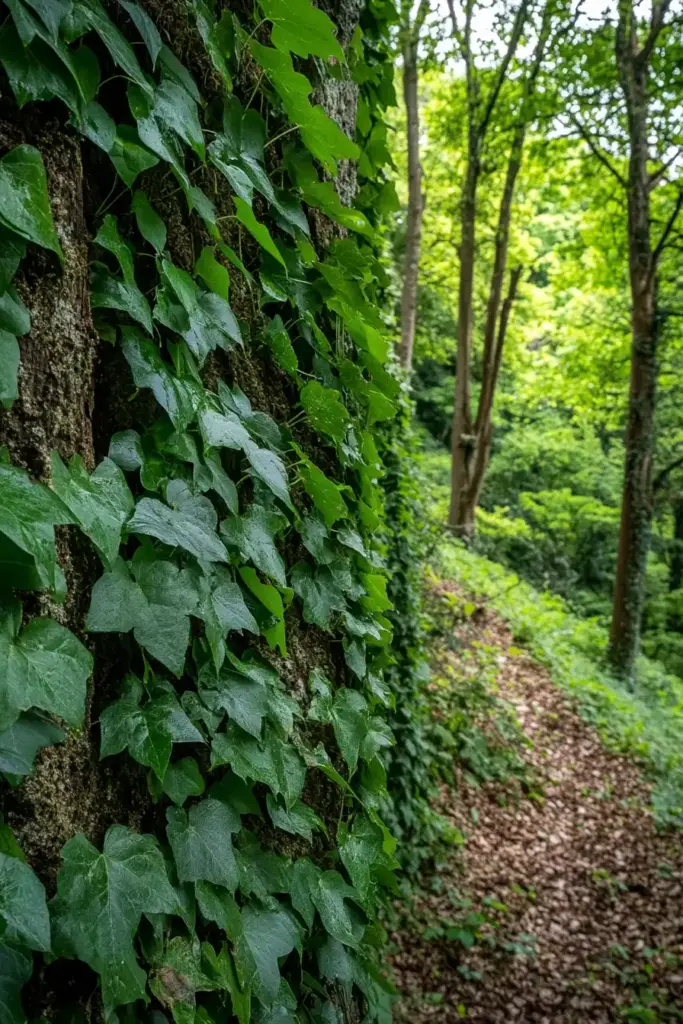Hillside landscaping can be both a rewarding challenge and a creative opportunity. Whether you’re working with a sloped backyard on a budget or tackling a more complex incline, the right ground cover plants can transform the space. These plants not only help prevent soil erosion but also turn rugged terrain into low-maintenance garden beds full of texture and color. Rather than wrestle with lawn upkeep and runoff, you can lean into nature’s solutions. In this guide, we’ll explore 12 of the best ground covers for slopes and hillsides—each one selected to enhance your landscape’s beauty and resilience.
🌿 Top 12 Ground Cover Plants for Hillside Landscaping
Table of Contents
1. English Ivy (Hedera helix)
English Ivy is a classic favorite in hillside landscaping for good reason. This fast-growing, evergreen vine is incredibly effective at stabilizing soil on slopes, thanks to its dense, trailing growth habit.
🌱 Why It Works:
- Erosion Control: Ivy’s thick foliage forms a natural mat that locks soil in place, preventing runoff during rainstorms.
- Shade Tolerant: Thrives in full to partial shade, making it perfect for north-facing slopes or tree-covered hillsides.
- Low Maintenance: Once established, it requires little care and remains green year-round.
⚠️ Things to Watch:
- Can be invasive in some regions. Check with your local extension service before planting.
- Needs trimming to keep it in check and away from structures.
Pro Tip: Use English Ivy on steep or shaded embankments where mowing or traditional landscaping is difficult. It’s an ideal way to turn tricky terrain into a lush, green feature.
2. Creeping Juniper (Juniperus horizontalis)
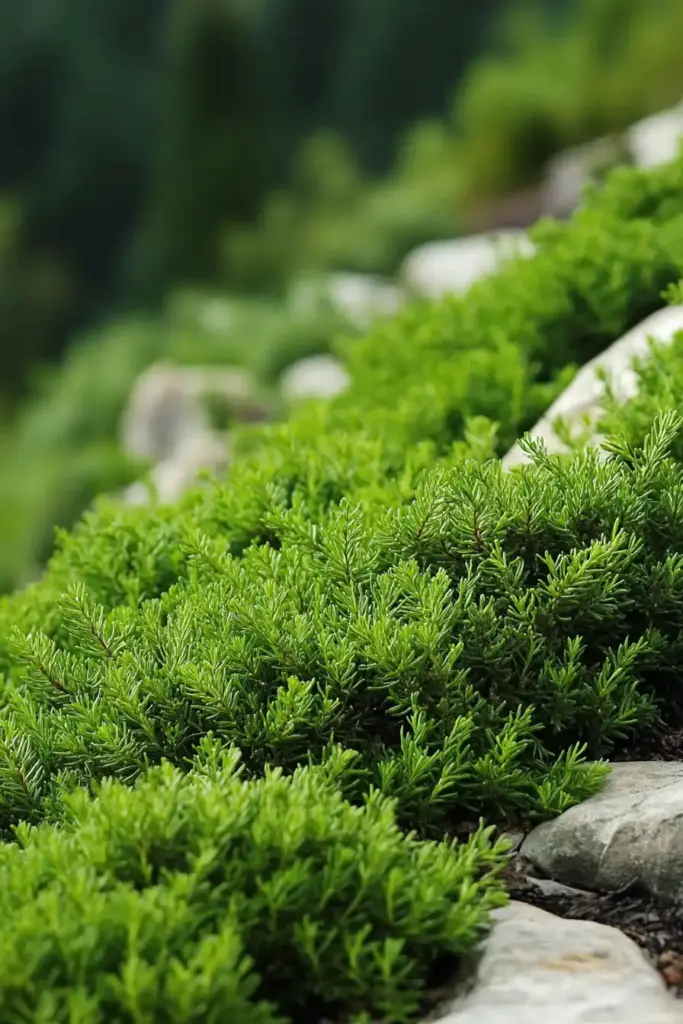
Creeping Juniper is a superstar when it comes to low-maintenance hillside landscaping. This rugged evergreen shrub forms a dense mat of feathery foliage that hugs the ground and thrives in tough conditions.
🌱 Why It Works:
- Erosion Hero: Its extensive root system locks soil in place, making it ideal for preventing washouts on steep grades.
- Sun Lover: Prefers full sun and does especially well on dry, sunny slopes.
- Evergreen Appeal: Provides year-round color and texture, even in winter.
🛠️ Landscaping Bonus:
- Varieties range from blue to green hues, adding contrast and visual interest.
- Naturally weed-suppressing due to its thick growth habit.
Pro Tip: Use Creeping Juniper to cover wide, open hillsides where you want visual consistency with minimal upkeep. It’s perfect for creating a uniform, natural look that stands up to harsh conditions.
3. Vinca Minor (Periwinkle)
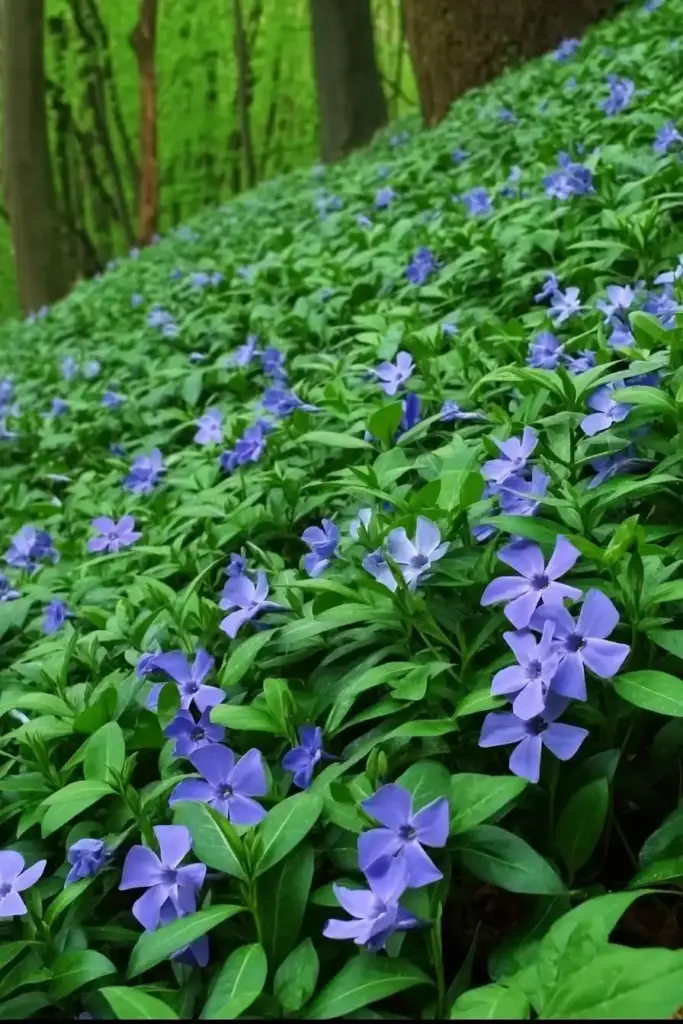
If you’re looking for a plant that combines beauty and utility, Vinca Minor—commonly known as Periwinkle—is a fantastic choice for hillside landscaping. This evergreen ground cover is prized for its lush green leaves and striking violet-blue blooms that appear in early spring.
🌱 Why It Works:
- Rapid Spreader: Once established, Periwinkle spreads quickly, forming a dense mat that stabilizes soil and chokes out weeds.
- Shade Friendly: Ideal for slopes under trees or on the shady side of your property.
- Evergreen Foliage: Keeps slopes green year-round, adding year-long interest.
💡 Design Highlights:
- Produces charming, star-shaped flowers in spring and occasionally in fall.
- Contrasts beautifully with stone borders or mulch.
Pro Tip: Vinca Minor is great for sloped areas where turf won’t grow. It’s particularly useful for shady, neglected corners where erosion is a concern and aesthetics matter.
4. Creeping Phlox (Phlox subulata)
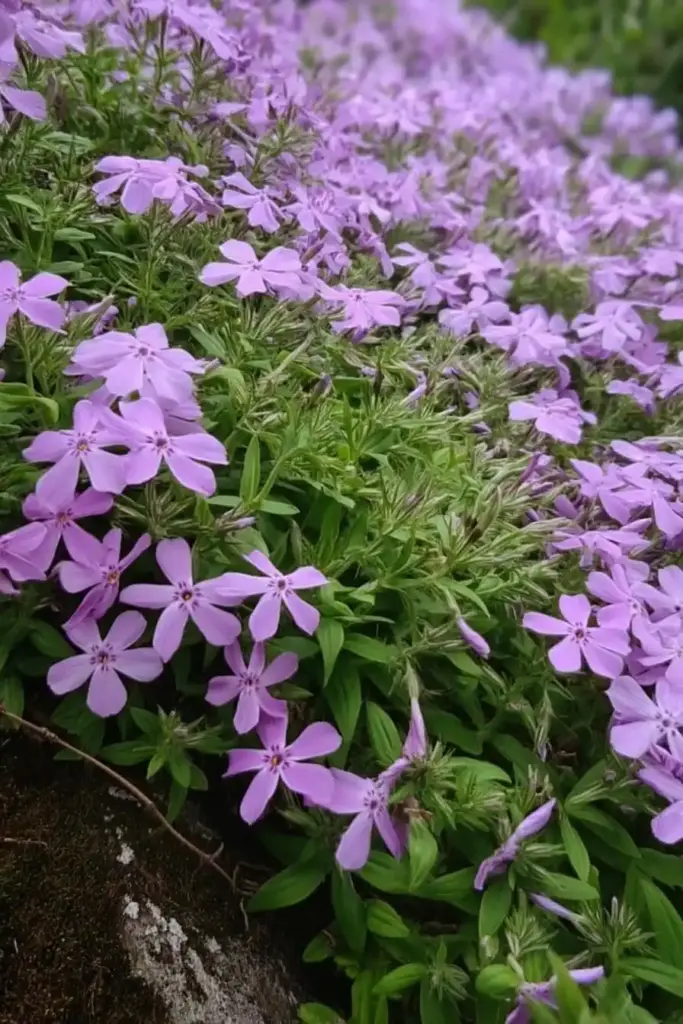
If you’re dreaming of a living carpet that bursts into color every spring, Creeping Phlox is your go-to plant for hillside landscaping. This low-growing perennial spreads rapidly, clinging to slopes with ease and putting on a dazzling floral display.
🌸 Why It Works:
- Spring Blooms: Produces a sea of pink, lavender, white, or blue flowers in early to mid-spring.
- Erosion Control: Forms a dense mat of foliage that stabilizes soil and helps prevent runoff.
- Drought Tolerant: Thrives in well-drained soil and handles dry conditions with minimal watering.
🎨 Visual Bonus:
- Adds a splash of vibrant color to otherwise dull or rocky slopes.
- Mix different varieties for a mosaic effect on hillsides.
Pro Tip: Creeping Phlox is ideal for sunny embankments, rock gardens, or slopes that need a pop of seasonal color. Plant in masses for maximum impact and erosion resistance.
5. Barrenwort (Epimedium)
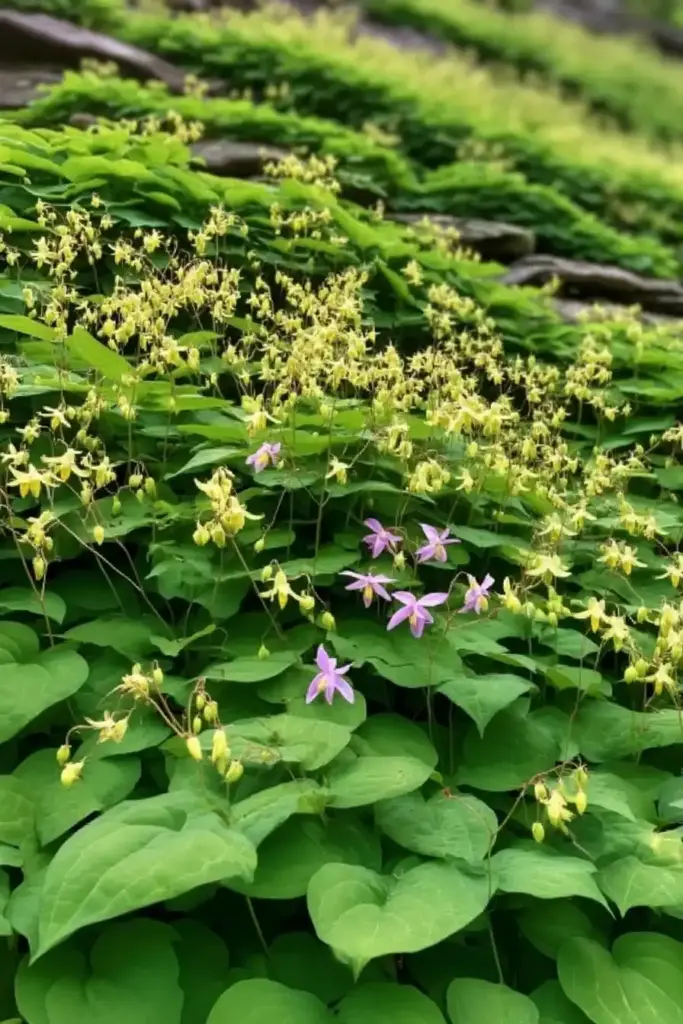
Known for its delicate flowers and heart-shaped leaves, Barrenwort (Epimedium) is a shade-loving champion in hillside landscaping. Often overlooked, this plant is surprisingly tough and thrives where others fail—especially under trees or in dry, shady slopes.
🌿 Why It Works:
- Shade Tolerant: Performs exceptionally well in dry, low-light conditions where grass and other plants struggle.
- Soil Stabilizer: Its slow but steady spreading habit helps hold soil on slopes without becoming invasive.
- Seasonal Charm: Sprouts dainty, fairy-like flowers in spring and foliage that often turns red or bronze in fall.
🌸 Extra Appeal:
- Available in a variety of colors including yellow, purple, and pink.
- Adds elegance to woodland hillsides or shady embankments.
Pro Tip: Use Barrenwort to soften the look of steep, shaded slopes or around the base of trees where erosion is a concern. It pairs beautifully with hostas and ferns for a layered woodland garden effect.
6. Groundcover Roses (Rosa spp.)
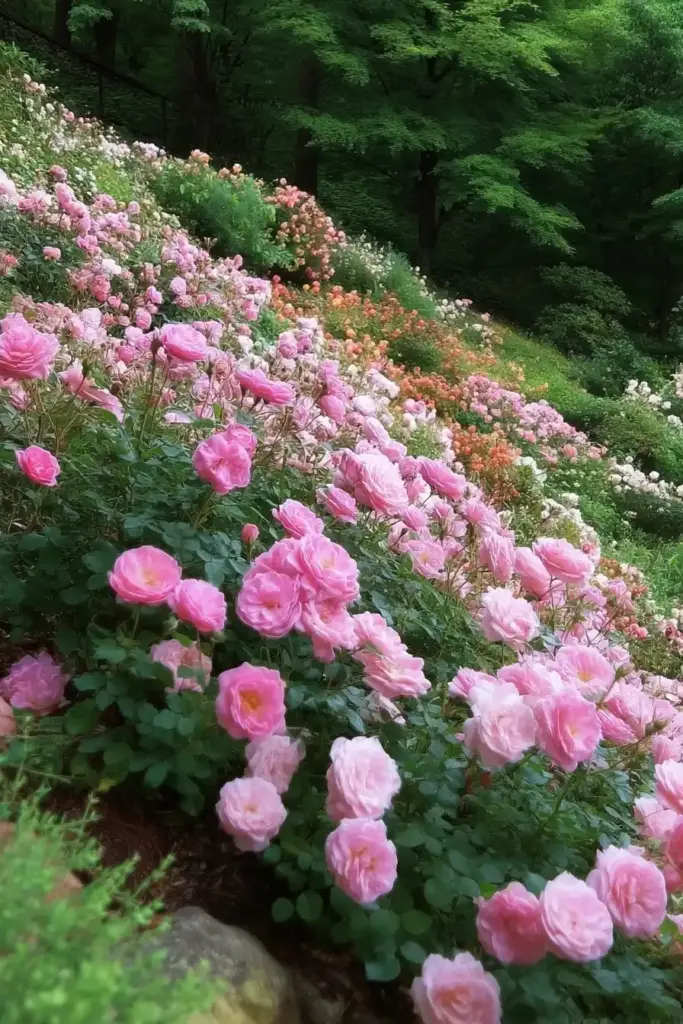
Groundcover roses are a perfect blend of ornamental charm and rugged durability in hillside landscaping. Unlike traditional rose bushes, these varieties grow low and wide, blanketing slopes with color while helping to reduce erosion.
🌹 Why It Works:
- Erosion Control: Their root systems stabilize the soil while their spreading growth habit protects against runoff.
- Low Maintenance: Many varieties are disease-resistant, drought-tolerant, and self-cleaning (no need for deadheading).
- Season-Long Color: Produces continuous blooms from late spring to frost.
🌈 Visual Benefits:
- Available in a range of colors: red, pink, white, yellow, and more.
- Adds elegance and structure to sloped gardens without the fuss of upright roses.
Pro Tip: Plant groundcover roses on sunny slopes where you want floral impact without constant upkeep. Mulch around them in the first season for moisture retention, then let them take over.
7. Lamb’s Ear (Stachys byzantina)
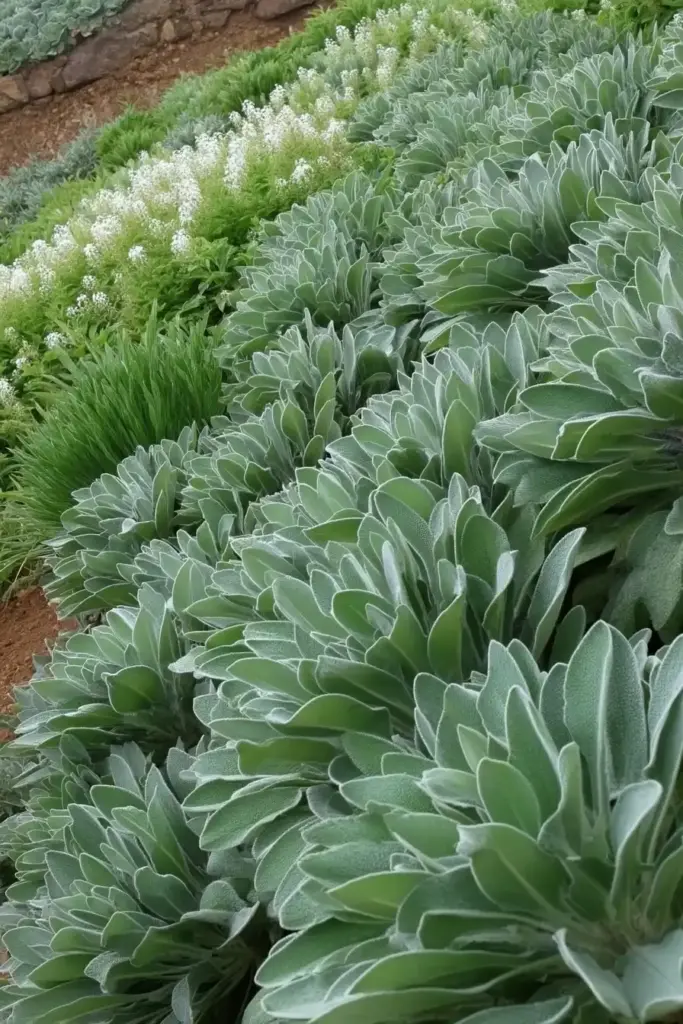
With its velvety, silvery leaves and tidy growth habit, Lamb’s Ear adds both texture and resilience to hillside landscaping. It’s especially useful on dry, sunny slopes where visual interest and soil stability are needed.
🐑 Why It Works:
- Drought Resistant: Thrives in poor, dry soils and doesn’t need much watering once established.
- Soil Stabilizer: Spreads in dense mats that hold the soil in place.
- Kid-Friendly Texture: Its soft, fuzzy foliage is fun to touch—perfect for gardens with children.
✨ Design Advantages:
- Silvery leaves provide contrast against green foliage or darker flowers.
- Occasionally produces tall flower spikes in summer, but many gardeners prefer it as a non-blooming ground cover.
Pro Tip: Use Lamb’s Ear to line sloped walkways, edge retaining walls, or fill sunny hillsides. It pairs beautifully with lavender, sedum, and ornamental grasses.
8. Bishop’s Weed (Aegopodium podagraria)
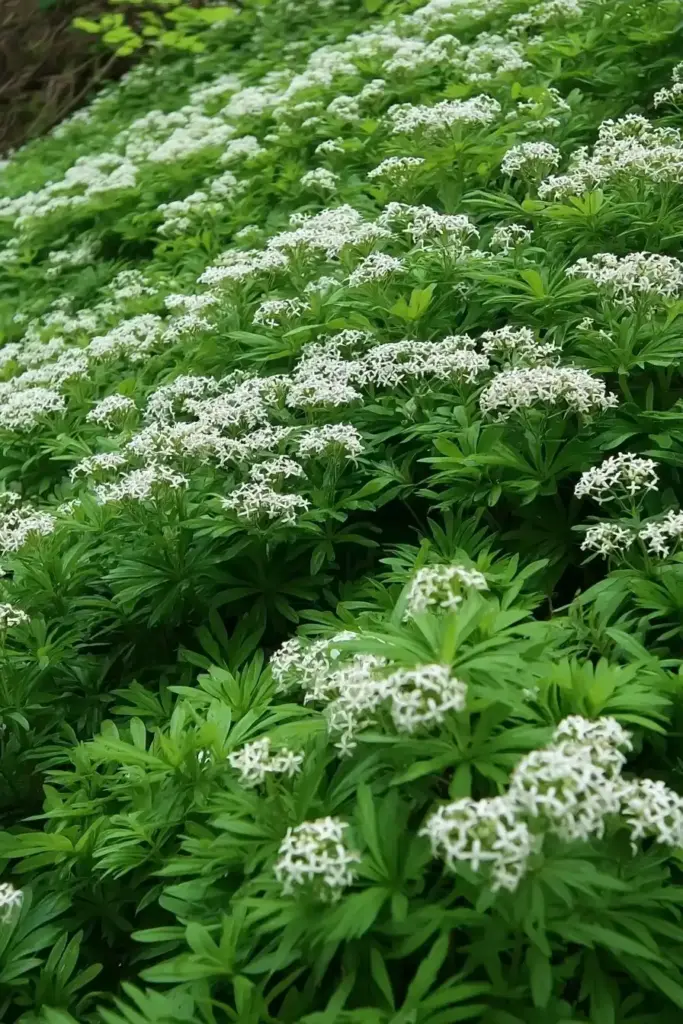
Also known as goutweed or snow-on-the-mountain, Bishop’s Weed is a vigorous ground cover that can quickly transform bare slopes into dense, erosion-resistant plantings in hillside landscaping. Its striking white and green foliage brightens shady areas and provides excellent ground coverage.
🌿 Why It Works:
- Rapid Spreader: Grows aggressively, making it effective for covering large slopes quickly.
- Erosion Control: Its root system forms a tight web that holds soil in place, even on steep banks.
- Shade Tolerant: Thrives in partial to full shade, perfect for under trees or on north-facing slopes.
⚠️ Important Note:
- This plant can become invasive if not managed. Best used in isolated, contained spaces or where complete coverage is the goal.
- Not ideal near garden beds where you want plant diversity.
Pro Tip: Use Bishop’s Weed on neglected or hard-to-maintain hillsides where aesthetics and erosion control are the top priorities. Its bright foliage can also be used to highlight dark corners of sloped landscapes.
9. Cotoneaster (Cotoneaster horizontalis)
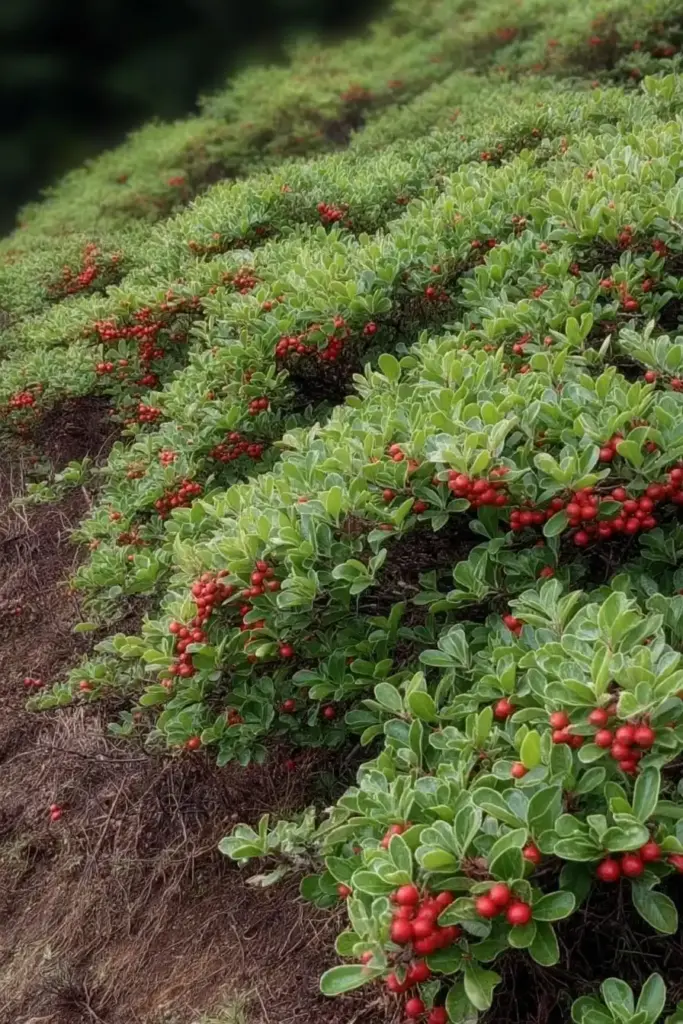
Cotoneaster is a woody, low-growing shrub that excels in hillside landscaping, offering year-round interest with glossy leaves, small flowers, and bright red berries. It’s a favorite for controlling erosion on open slopes and embankments.
🌳 Why It Works:
- Excellent Erosion Control: Its branching structure spreads wide and deep, securing soil even on steep hillsides.
- Multi-Season Appeal: Blooms in spring, bears berries in fall, and holds structure through winter.
- Low Maintenance: Drought-tolerant and pest-resistant once established.
🍒 Landscape Highlights:
- Adds texture and dimension to a sloped garden with its herringbone branch pattern.
- Attracts birds with its vibrant berries, enhancing the ecological value of your slope.
Pro Tip: Use Cotoneaster on large, sunny hillsides where you want structure and erosion protection with minimal pruning. Space plants apart and let them form a dense, sculptural mat over time.
10. Ajuga (Bugleweed)
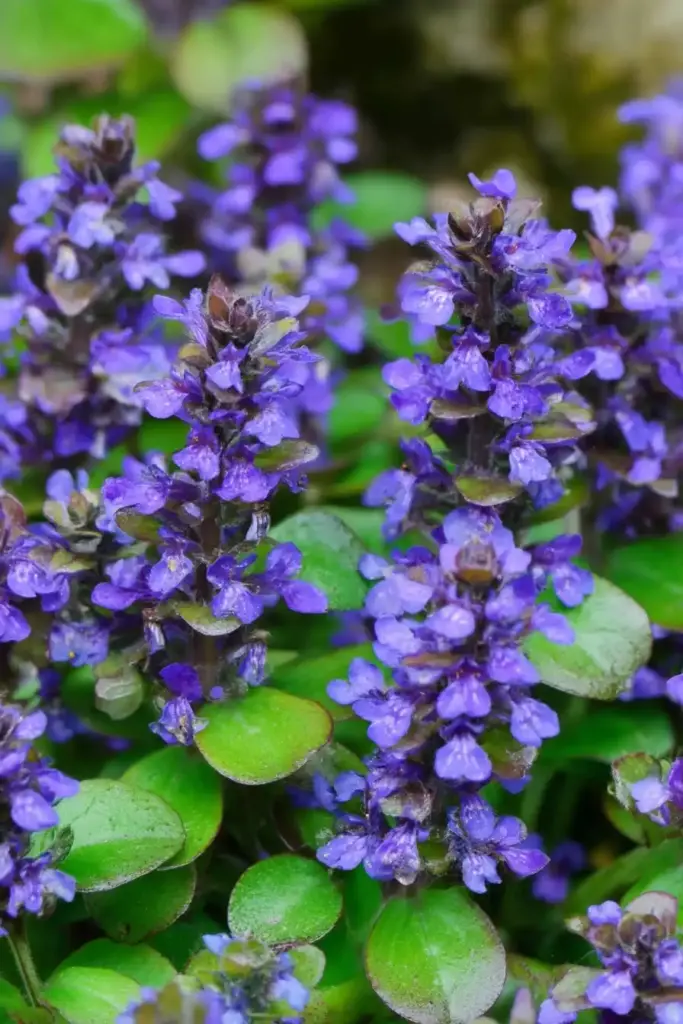
Ajuga, also known as Bugleweed, is a dynamic ground cover that thrives in various conditions, making it a versatile option for hillside landscaping. With its colorful foliage and deep blue flower spikes, it’s as ornamental as it is functional.
🌱 Why It Works:
- Quick to Fill In: Spreads via runners, forming a thick mat that suppresses weeds and stabilizes slopes.
- Low-Growing and Hardy: Tolerates foot traffic and adapts to sun or partial shade.
- Colorful Foliage: Available in bronze, purple, and variegated leaf forms for visual interest year-round.
💐 Bloom Bonus:
- Produces spikes of violet-blue flowers in late spring to early summer, attracting pollinators.
Pro Tip: Plant Ajuga in mass along hillside paths or between stepping stones to prevent erosion while adding bursts of color. It works well under trees or in mixed borders on sloped terrain.
11. Sweet Woodruff (Galium odoratum)
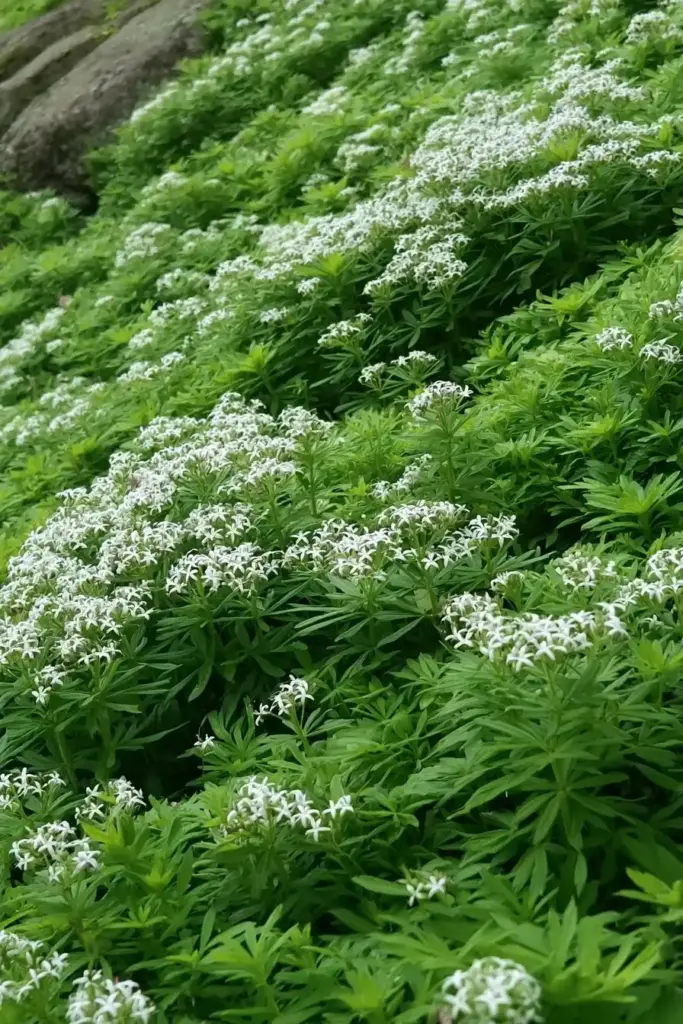
Sweet Woodruff brings charm, fragrance, and resilience to shady slopes, making it a lovely addition to any hillside landscaping plan. This herbaceous perennial forms a low, lush carpet of green, topped with delicate white flowers in spring.
🌼 Why It Works:
- Shade Loving: One of the best ground covers for deep shade—perfect under trees or on north-facing slopes.
- Fragrant Foliage: Emits a sweet, hay-like scent, especially when leaves are crushed or dried.
- Erosion Protection: Grows densely and forms roots that anchor well into sloped soil.
🌿 Aesthetic Appeal:
- Features whorled leaves and tiny, star-shaped flowers that add elegance to woodland gardens.
- Remains attractive even after blooming, with neat, tidy foliage.
Pro Tip: Use Sweet Woodruff to soften woodland hillsides or shady garden edges. It pairs well with hostas, ferns, and Barrenwort for a layered, shade-friendly slope design.
12. Sedum (Stonecrop)
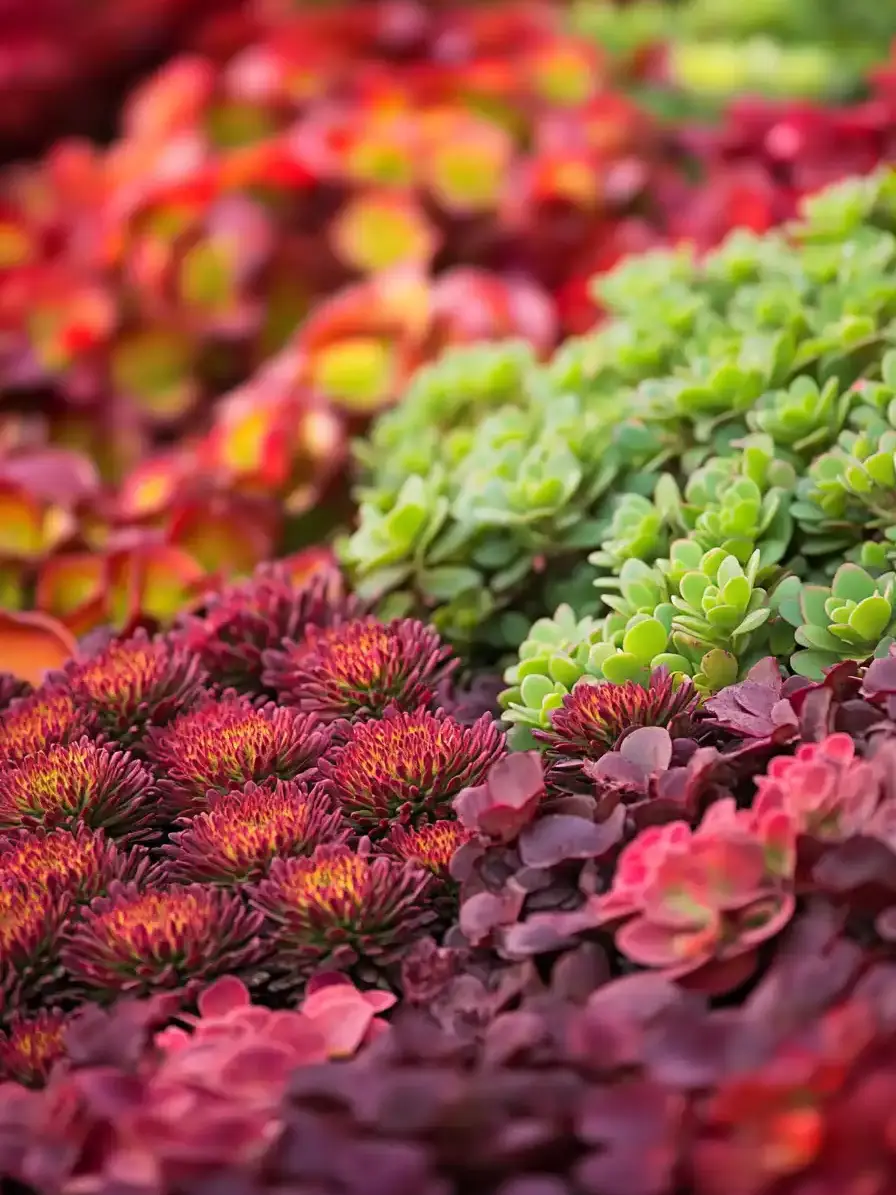
Sedum, commonly known as Stonecrop, is a rockstar in hillside landscaping, especially where water is scarce and sun is plentiful. These hardy succulents come in various shapes and colors and are nearly indestructible once established.
🌞 Why It Works:
- Drought Tolerant: Stores water in its fleshy leaves, making it ideal for dry, rocky slopes.
- Erosion Resistant: Forms dense mats that cling to soil and prevent washout.
- Low Maintenance: Requires almost no care once rooted—no need to water, prune, or fertilize regularly.
🌈 Design Flexibility:
- Available in creeping or upright varieties, with colors ranging from green and blue to red and gold.
- Flowers attract pollinators and offer seasonal color in late summer and fall.
Pro Tip: Use Sedum for xeriscaping or on steep, sun-exposed slopes where other plants fail. Mix varieties for a mosaic of texture and color that changes with the seasons.
author:🌱 Conclusion
Taming a slope doesn’t have to mean endless upkeep or ongoing erosion worries. With the right ground cover plants, hillside landscaping becomes both achievable and rewarding. Whether you’re working with sun-drenched slopes or shady corners, there’s a perfect plant for every terrain—from shade-loving picks like Sweet Woodruff to drought-tolerant favorites like Sedum and Creeping Juniper. These versatile ground covers don’t just stabilize your soil—they bring lasting color, rich texture, and a touch of nature’s artistry to your outdoor space. So whether you’re crafting a low-maintenance flower garden or designing for erosion resistance, these 12 plant options offer resilient, eye-catching solutions that thrive with minimal fuss.
❓ FAQ – Hillside Landscaping with Ground Cover Plants
What is the best ground cover plant for erosion control on slopes?
Creeping Juniper is one of the best ground covers for erosion control. Its deep, spreading roots and evergreen coverage make it excellent for stabilizing soil on slopes.
Can ground cover plants replace grass on a hillside?
Yes! Ground cover plants are a low-maintenance, visually appealing alternative to grass. Varieties like Creeping Phlox, Ajuga, and Lamb’s Ear are great choices depending on your slope’s sun exposure.
How do I prepare a hillside for planting ground cover?
Start by removing weeds and debris. Then, loosen the soil and add compost or erosion-control fabric if needed. Plant in staggered rows to create dense coverage and reduce runoff.
Are there ground cover plants suitable for shady hillsides?
Absolutely. Sweet Woodruff, Vinca Minor, Barrenwort, and Bishop’s Weed thrive in partial to full shade and provide excellent erosion control in low-light conditions.
Do I need mulch with ground cover plants on a slope?
Mulch can help during the first year to retain moisture and suppress weeds. Once the ground cover is established, it typically forms a natural mulch layer of its own.
How long does it take for ground covers to establish on a hillside?
Most ground covers take one full growing season to establish. Fast spreaders like Vinca Minor or Ajuga can fill in within months, while slower growers like Barrenwort may take longer.
Can I mix different ground cover plants on one slope?
Yes, mixing varieties can enhance visual appeal and biodiversity. Just make sure their water, light, and soil preferences are compatible.
🌿 Love gardening inspiration? Follow me on Pinterest for bold plant ideas, tips, and seasonal color!
More Posts
